A julienne vegetable peeler is a must-have kitchen tool that you can use to make perfectly julienned vegetables in no time! This post provides a step-by-step tutorial on how to use a julienne peeler on different vegetables, including root vegetables, potatoes, and zucchini.
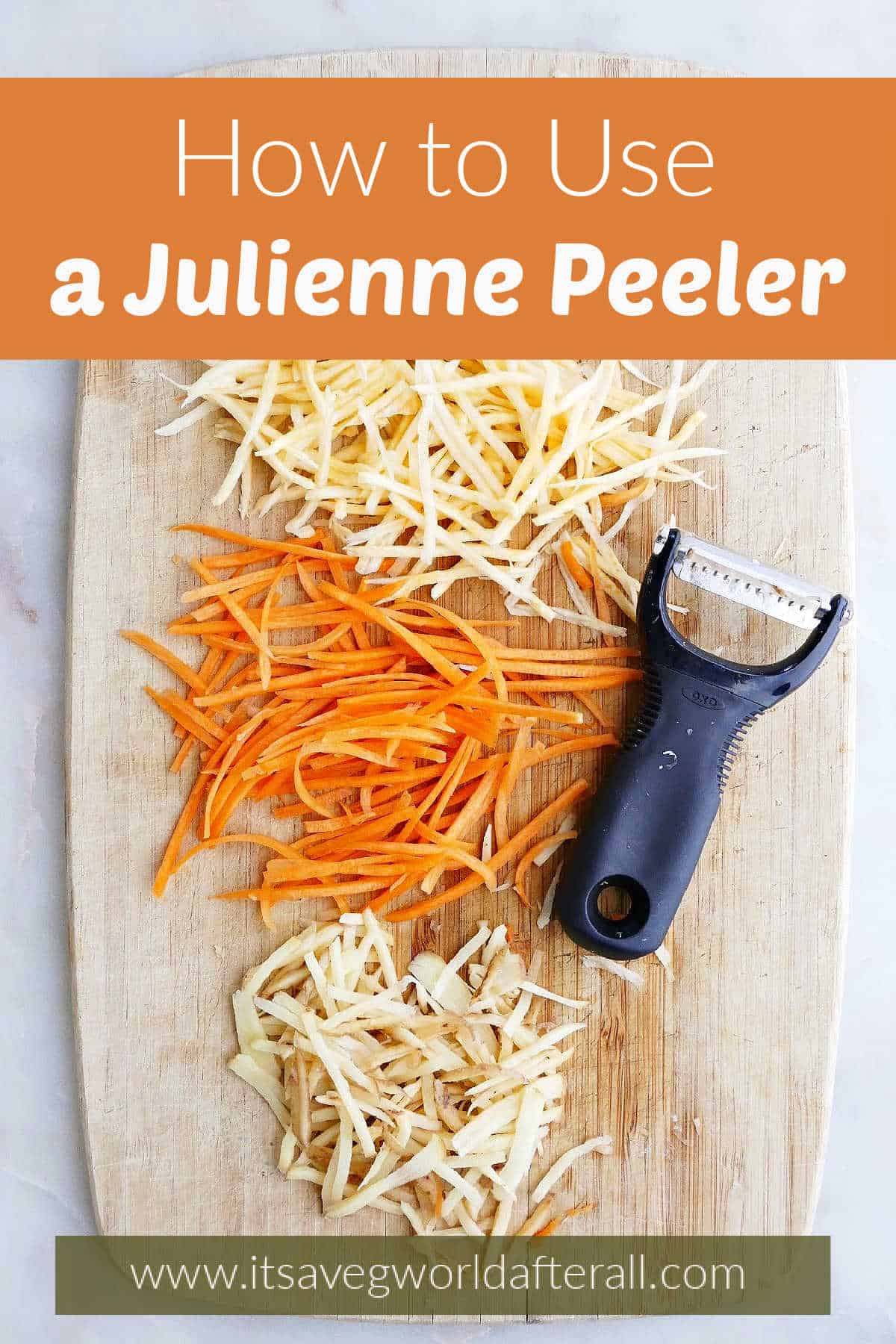
This post may contain affiliate links. For more information, see my affiliate disclosure.
Have you ever wanted to make veggie slaws and salads that have “julienned” veggies? But you don’t know how to prepare them in this way?
To julienne a vegetable means to cut it into short, thin strips. This technique, also known as French cut, can be challenging, and it requires a lot of patience.
But julienned veggies are really pretty, can soak up flavors well, and make raw veggie preparations appear very appetizing and even gourmet. Sometimes, appearance is half the battle when it comes to encouraging veggie consumption. So, julienned vegetables are a great addition to your cooking arsenal, especially if you have some picky eaters at home.
Fortunately, there’s a game-changing and time-saving tool out there for us home chefs: the julienne peeler! This tool looks similar to a Y-peeler but has sharp, jagged edges where you would usually find a straight peeling blade.
In this post, I’ll walk you through how to use a julienne peeler and discuss the types of veggies to try cutting with it. Be sure to scroll down to the recipe card to check out the video tutorial, in addition to the step-by-step photos.
Best Julienne Peeler
I highly recommend the Oxo Julienne Peeler. You can find it at Amazon and several cooking, home goods, or department stores, such as Crate and Barrel.
How to Safely Use a Julienne Peeler
The blade of a julienne peeler is very sharp. You need to use it correctly to avoid cutting yourself.
First, when you’re not using the peeler, make sure the plastic cover is flipped over the blade. This will prevent any accidental injuries that might occur from brushing up against an open blade while you look for another tool in your kitchen drawer.
Second, always place the vegetable on a cutting board for support when using a julienne peeler. You will see what I mean in the images that follow. It can be tempting to hold some veggies in your palm, such as potatoes or other small, round veggies, but this will put you at risk of nicking your thumb, palm, or other fingers.
Third, it’s not always possible to use a julienne peeler on the entire vegetable. Stop using the peeler as soon as it gets difficult to cut into what’s left of the vegetable. Slice the rest of the vegetable with a knife.
And finally, a julienne peeler does not work on every vegetable. It’s meant for firm veggies like root vegetables, instead of soft ones like tomatoes.
Here’s how to use a julienne vegetable peeler on three different types of veggies:
Rutabaga, turnips, or beets: Slice round root veggies in half. If you keep them whole, you won’t be able to lay them flat on a cutting board for support. Place one half cut side down on a cutting board, and run the peeler from top to bottom. Use your free hand to hold the veggie down at the top, so that you keep your fingers away from the path of the peeler/blade. Repeat with the other half.
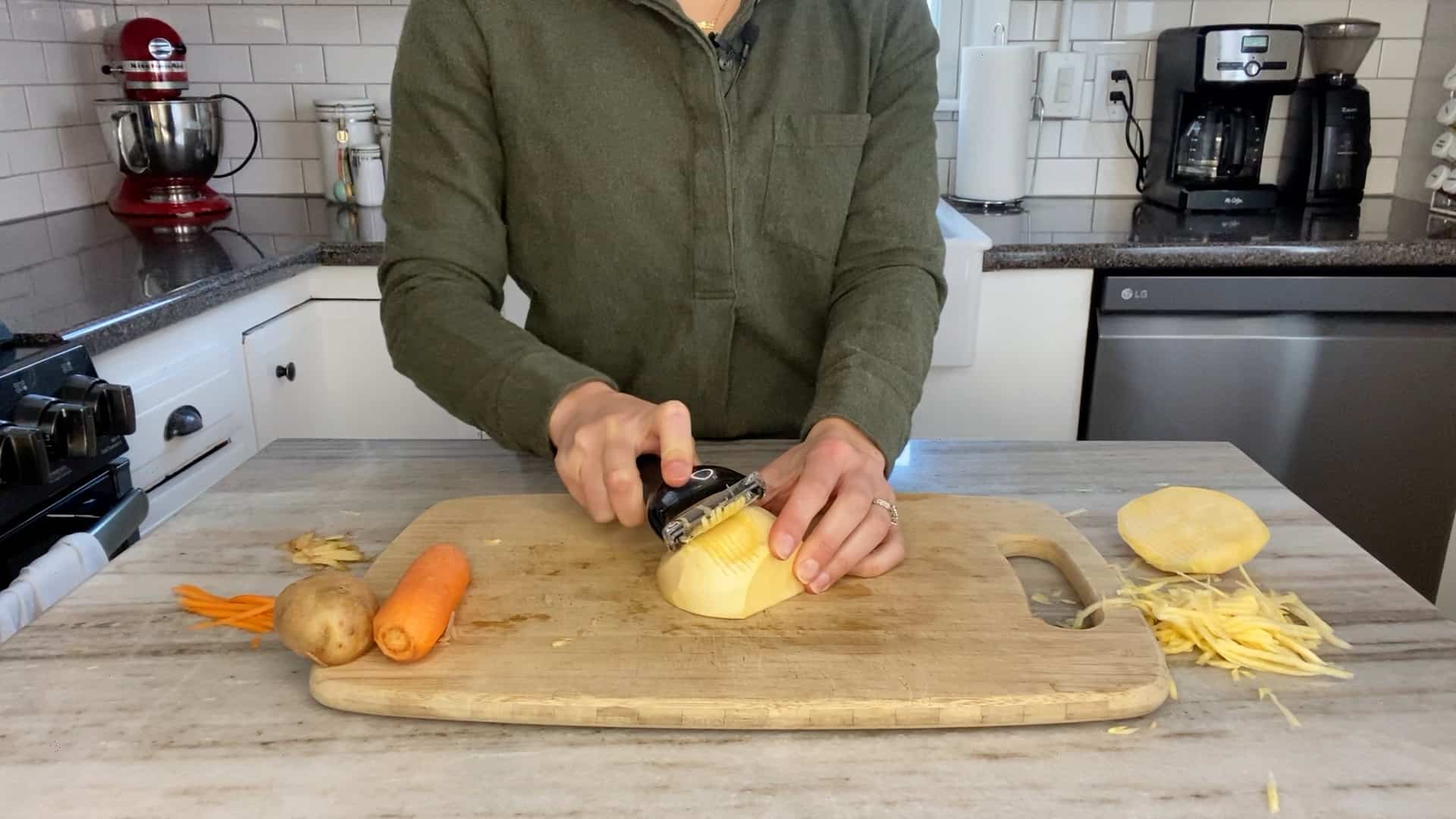
Carrots and zucchini: Lay the vegetable flat on the cutting board. If it moves around, use a knife to slice off some of one side so that it stays still. Run the peeler from top to bottom. Use your free hand to hold the veggie down at the top, so that you keep your fingers away from the path of the peeler/blade.
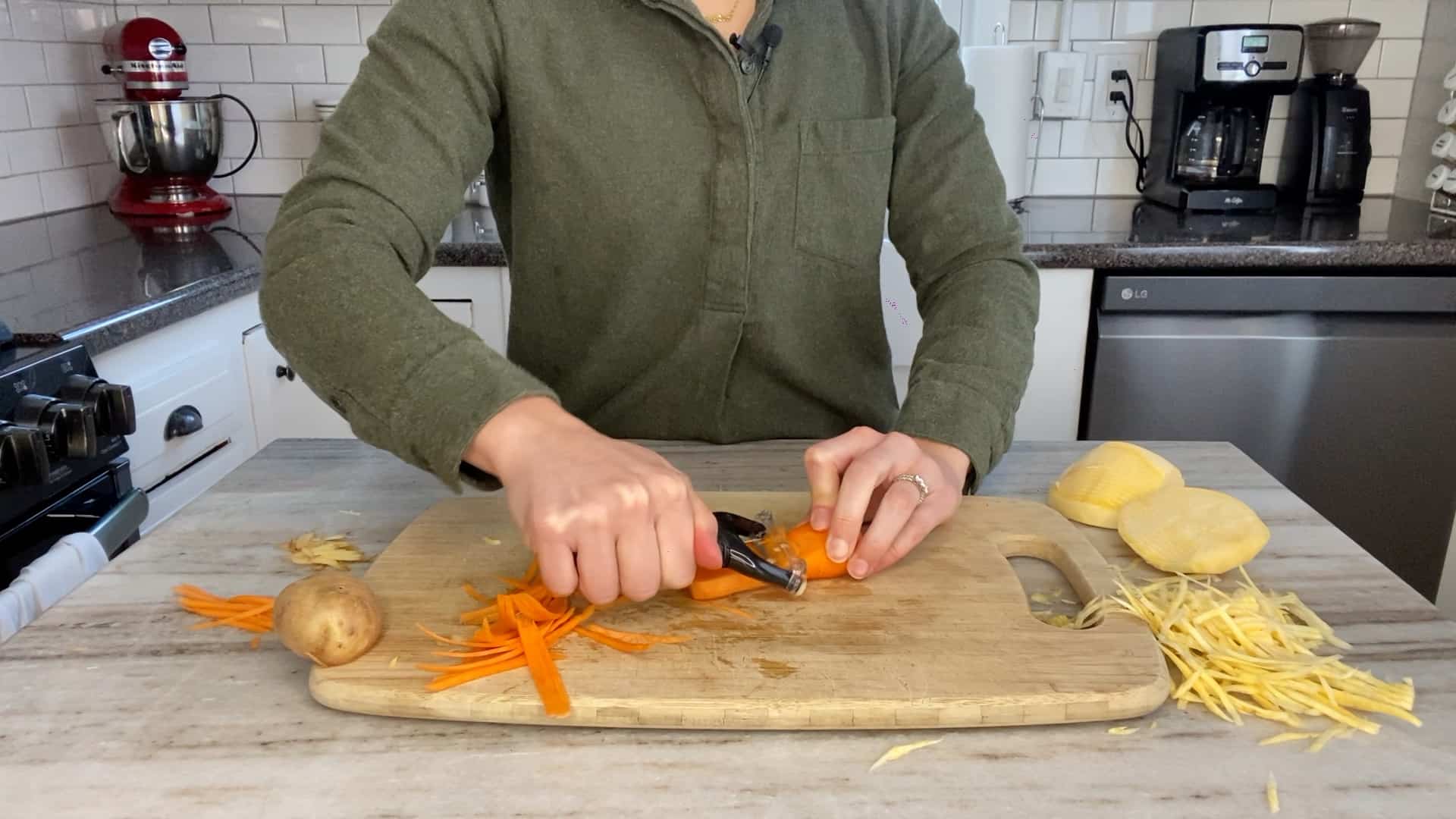
Potatoes: You can use the same technique as the one for other round root veggies. Or you can cut the potato in half lengthwise and use your hand without the peeler to balance it at a 45 degree angle (approximately) on the cutting board. Then, run the peeler from top to bottom. Due to the shape of potatoes, the potato will still be supported by its own flesh pressed up against the cutting board, but it will be easier to peel on an angle.
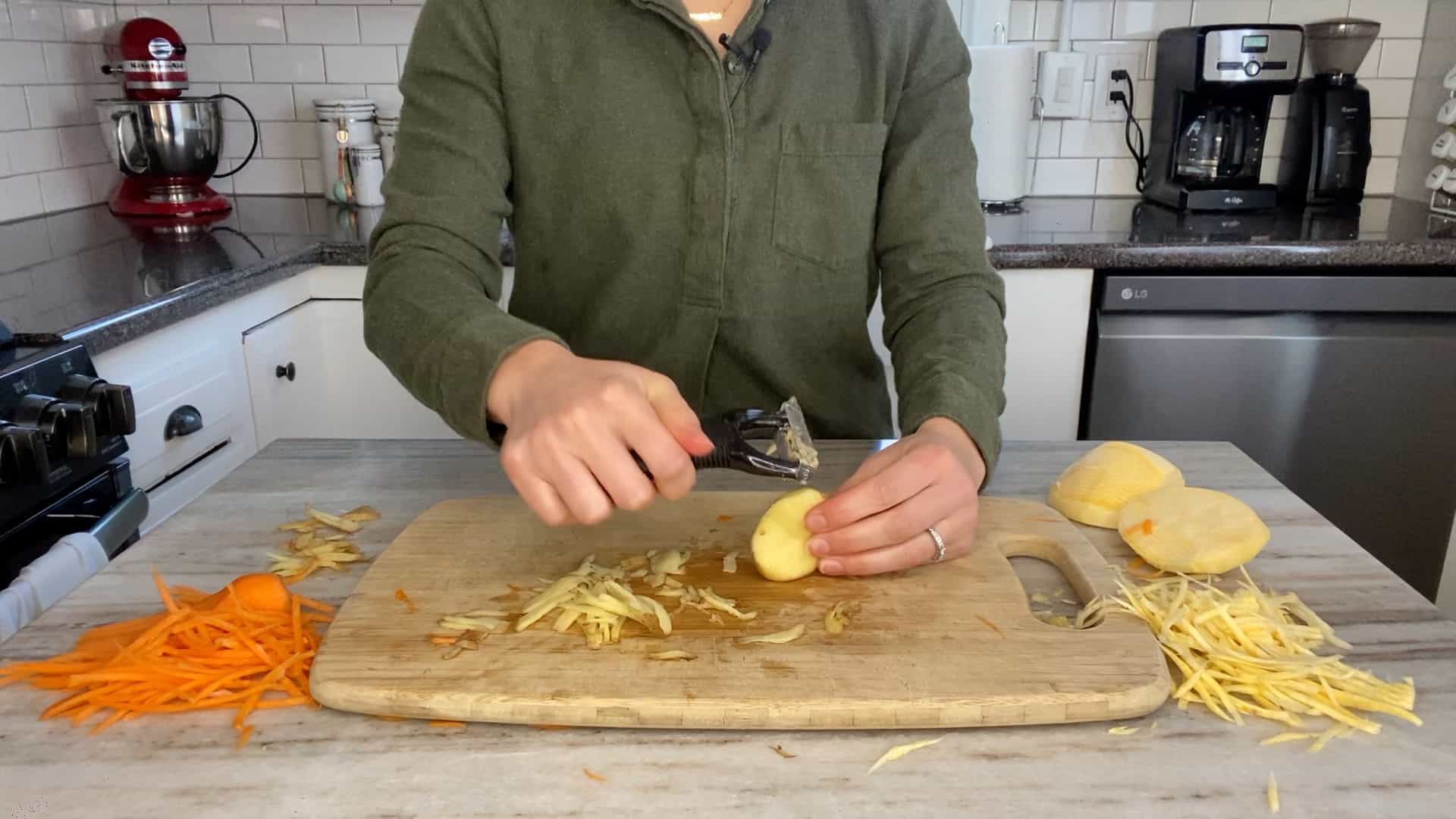
Julienne Peeler Uses
Now that you know how to use a julienne peeler, let’s discuss ways to use your shredded matchstick veggies. Julienned vegetables are most commonly used in raw preparations, such as salads and slaws. However, they can also be cooked.
Julienned potatoes make GREAT hash browns! Cook them in some oil, salt, and pepper in a skillet until tender and slightly crispy.
Here are the best vegetables to prepare with a julienne peeler. Click the links to see all of my recipes using these veggies.
- Carrots
- Parsnips
- Zucchini
- Rutabaga (try my Raw Rutabaga Salad)
- Turnips
- Daikon radishes (try my Purple Radish Salad)
- Potatoes
- Beets
- Sweet potatoes
- Squash (yes, you can use it on butternut or other types of winter squash!)
Video
📖 Recipe
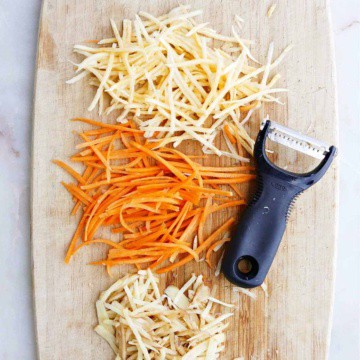
How to Use a Julienne Peeler
Equipment
- Julienne peeler
Ingredients
- 1 carrot - or other firm vegetable
Instructions
- Lay the carrot flat on a cutting board. If it rolls around, try slicing off some of one side so that it sits still.
- Hold the julienne peeler in one hand and run it from the top of the carrot to the bottom, making thin strips as you go. Use your other hand to hold the veggie down at the top away from the path of the blade.
- Slice any remaining carrot that you were not able to run through the peeler with a knife. Enjoy in salads, slaws, and more!
Video
Notes
- Use the same technique when using a julienne peeler on zucchini.
- When using the peeler on round root veggies, such as beets, turnips, or rutabaga, peel and slice the veggies in half. Place one half cut side down on the cutting board for stability before running the peeler from top to bottom. Use your free hand to hold the veggie down at the top away from the blade’s path.
- For potatoes, use the same technique as the one for other round root veggies. Or, cut the potato in half lengthwise and hold one half at a 45 degree angle on the cutting board. This way, it will still be supported on the cutting board but will be easier to peel at an angle.
- Safety precautions:
- Always make sure the plastic cover is flipped over the blade on the julienne peeler when you are not using it.
- Always use a cutting board for support when using a julienne peeler. Do not hold veggies in your palm, since this increases the risk of nicking your thumb, palm, or fingers.
- It’s not always possible to cut the entire vegetable with a julienne peeler. Stop using the peeler once there isn’t enough veggie left to safely run through it. Cut the rest of the veggie with a knife.

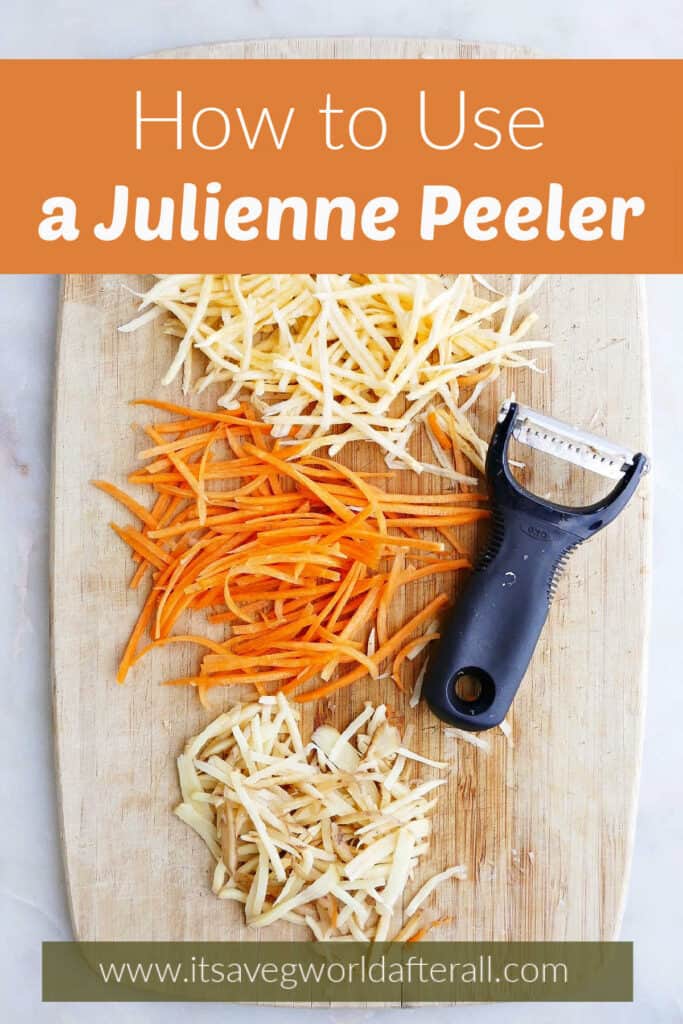
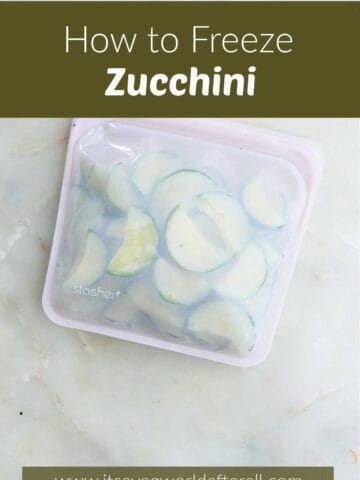
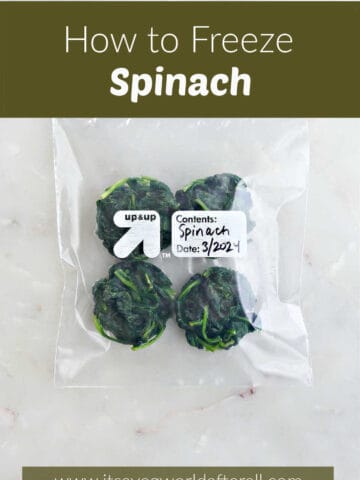
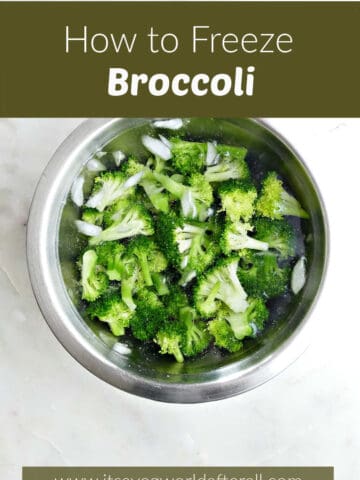
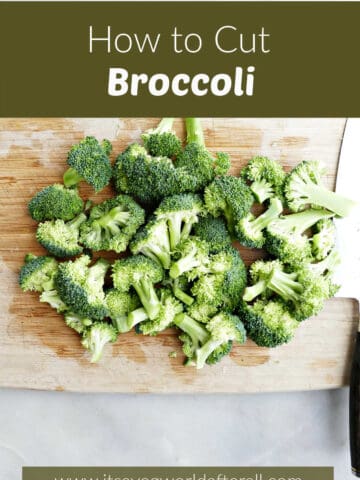
Comments
No Comments